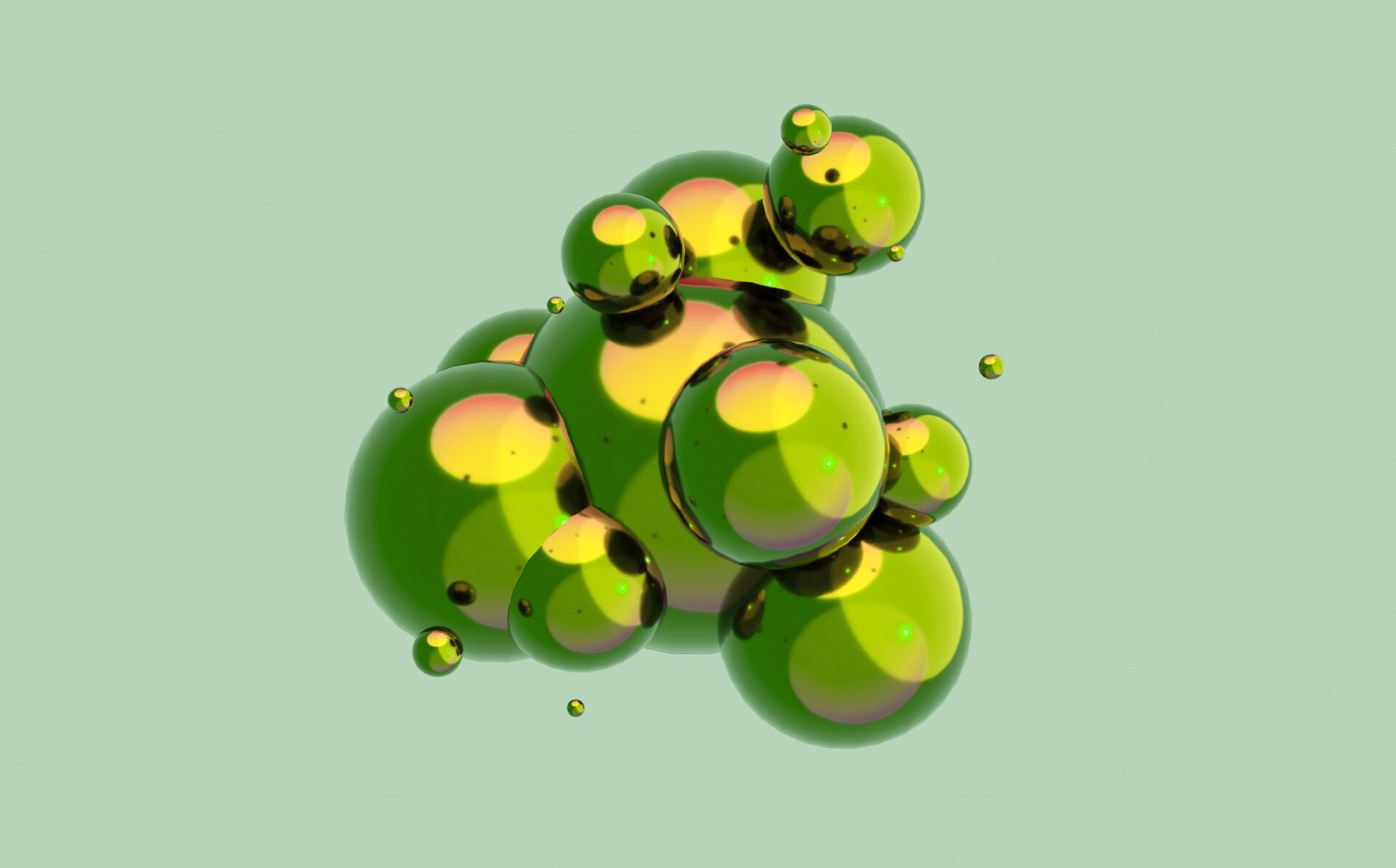
We store hydrogen in a liquid organic carrier. The missing link to clean hydrogen supply chains.
Our LOHC Technology – disrupting hydrogen infrastructure
The LOHC Cycle
Hydrogen is the most abundant element in the universe and can be produced using renewable energy sources. At the same time, it has the lowest density of all gases and has nearly three times the energy content compared to gasoline. Long story short: Hydrogen is the best energy carrier known to mankind. But it is difficult to handle. Good news is, we found a way to bind the molecular hydrogen to a thermal oil making it very safe and very easy to transport – this is our LOHC technology.

Our hydrogen carrier benzyltoluene stands out due to its inherent characteristics

Superior safety
- No handling of molecular hydrogen
- Hardly flammable with flash point 112,5 °C, non-explosive, even when loaded with hydrogen
- Hazard potential comparable to Diesel and thus clearly superior to ammonia
Enhanced flexibility
- Conventional liquid fuel infrastructure usable
- Handling at ambient temperatures and pressure during storage and transport
- No self-discharge over time – multi-month storage without losses
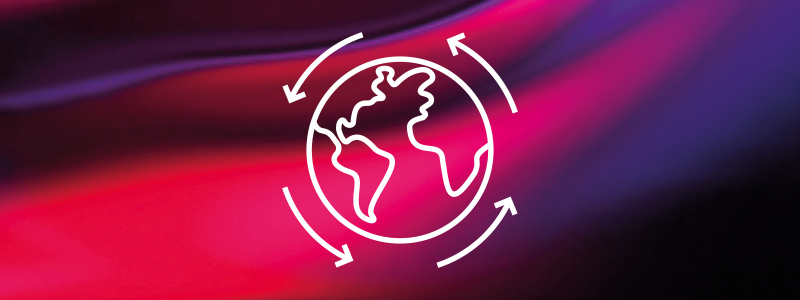

High efficiency
- Competitive volumetric storage density 54 kg hydrogen per m³ LOHC
- Carrier material commercially available and reusable hundreds of times
- Fuel cell grade hydrogen purity according to ISO 14687 by using off-the-shelf purification technology
Leading science and research advancing LOHC tech
-
Friedrich-Alexander-Universität Erlangen-Nürnberg
Founded in 1743, Friedrich-Alexander-Universität Erlangen-Nürnberg (FAU) is now one of the largest research universities in Germany with about 38,000 students. One of the key research priorities of FAU is the subject area “energy, environment and climate”. In this field scientists are developing an interdisciplinary approach to producing renewable energy with printable photovoltaic technology, conversion into chemical energy using electrolysis and fuel cells – and scalable storage in LOHC. As a spin-off from FAU, Hydrogenious maintains a very close partnership when it comes to basic research. Even today FAU professors a part of Hydrogenious’ scientific advisory board.
-
Helmholtz Institute Erlangen-Nürnberg for Renewable Energy
The Helmholtz Institute Erlangen-Nürnberg for Renewable Energy (HI ERN) investigates and develops material- and process-based solutions for a climate-neutral, sustainable, and cost-effective utilization of renewable energies. The institute works on the structural and functional characterization, modeling, and processing of materials relevant to hydrogen and solar technology. The common goal is the understanding of structure-performance-process relationship on the mesoscale. The “Chemical Hydrogen Storage” research department of HI ERN targets new chemical hydrogen storage technologies such as LOHC, related catalytic processes and material technologies. The HI ERN is set up as part of Forschungszentrum Jülich and is operated in close cooperation with Friedrich-Alexander-Universität Erlangen-Nürnberg (FAU) and Helmholtz-Zentrum Berlin (HZB).
-
Forschungszentrum Jülich
The Institute for a Sustainable Hydrogen Economy (INW) of Forschungszentrum Jülich will pool the scientific activities in this field within the H2 innovation centre of the Helmholtz hydrogen cluster HC-H2, where Forschungszentrum Jülich will bring its broad expertise with hydrogen to bear and connect with partners. Research at INW will focus on chemical hydrogen storage technologies using liquid and easily liquefiable hydrogen carriers that can be handled in a similar way to conventional fossil fuels. Research at INW will be conducted in at least four research fields, ranging from the nano- to the mesoscale and from the reactor to the system scale.
Easy and efficient: We utilize conventional liquid-fuel infrastructure
We are about creating global LOHC supply chains for green hydrogen from production facilities to worldwide consumption markets. This LOHC network is designed to transport green hydrogen very safely and efficiently to the offtakers using the existing infrastructure for fossil fuels. In this network we are developing logistic solutions for all LOHC transport modes with the goal to establish multi-channel deliveries. Currently our focus is to establish a large-scale port to port LOHC infrastructure from where onward distribution is possible.
With similar but much less dangerous transport conditions than diesel, our LOHC material – benzyltoluene – has the potential to replace the current liquids in the energy sector: Bound to LOHC, hydrogen is stored at ambient conditions without the need of pressurized or cryogenic vessels. Plus, benzyltoluene is flame retardant, non-explosive and has a relatively low hazard potential.
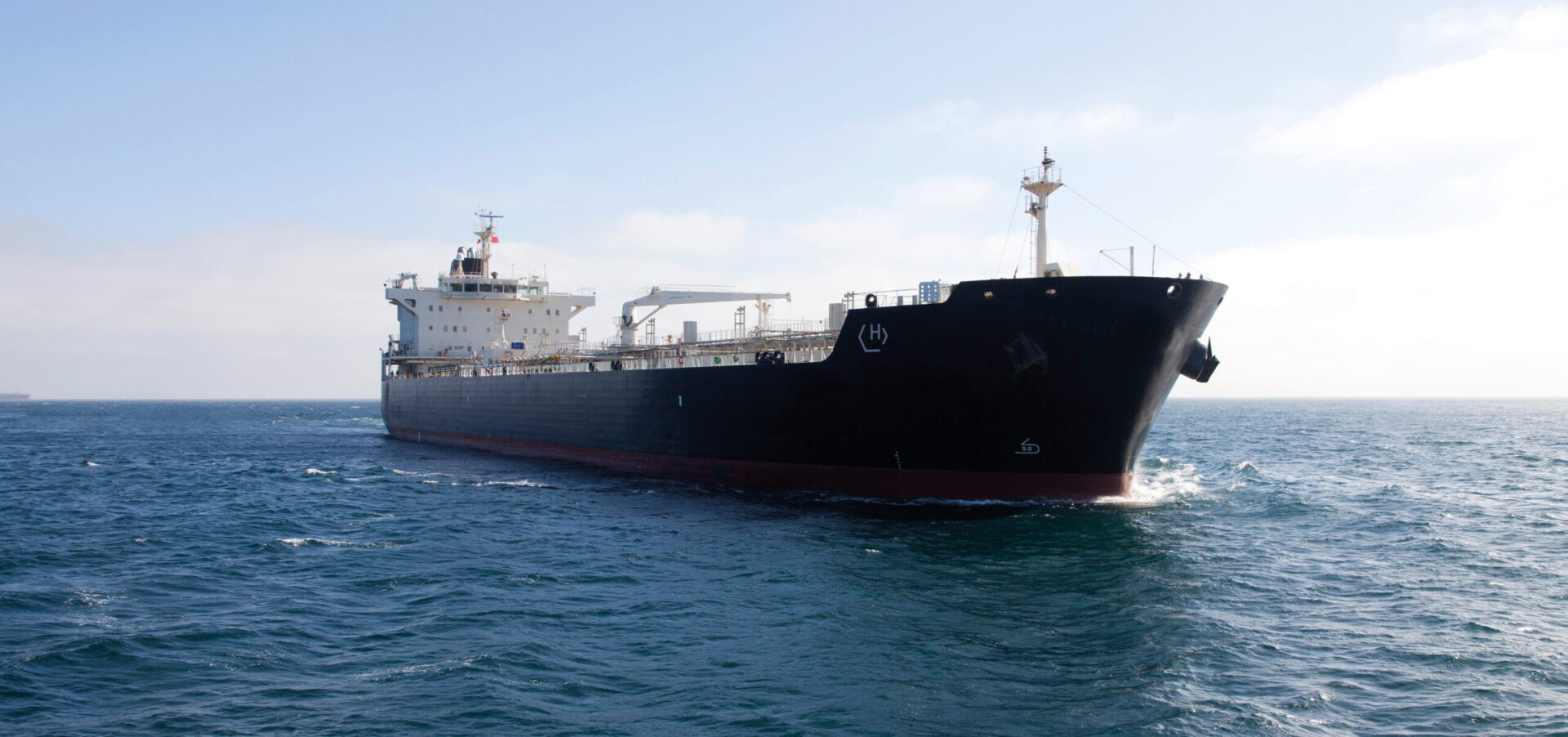
LOHC transport

by ship
- Hydrogen transport capacity per trip: approx. 17,000 t (VLCC, 280k DWT)
- Ideal for large scale hydrogen transport on long distances
- Import of low-cost green hydrogen to consumption markets
- Low CAPEX thanks to the usage of the existing infrastructure
- Easy and fast handling by pumping a liquid

by train & barge
- Hydrogen transport capacity per trip: up to 124 t
- Ideal for transport on medium distances and distribution
- Usage of the existing port, ship, rail and train infrastructure
- Highly flexible distribution enabling global market supply
- Easy and fast handling by pumping a liquid

by tank truck
- Hydrogen transport capacity per trip: up to 1.6 t
- Ideal for short distances and distribution
- Standard unpressurized aluminium tank
- Connecting isolated regions to the hydrogen world
- Simultaneous receiving and discharging of LOHC (up to 1.000 l/min)
Key stepping stones for ramping up hydrogen imports
We accelerate green hydrogen supply ramp-up within Europe.
-
Green Hydrogen @ Blue Danube
(Bavaria, Germany)Green Hydrogen @ Blue Danube is qualified in Germany within the IPCEI Hy2Infra wave by the European Commission and aims to secure a stable clean hydrogen supply across Central Europe. In the project we focus on the efficient implementation of large-scale LOHC technology by utilizing the existing infrastructure for liquid fuels.
In South Bavaria, Germany, we are building the first LOHC hub in Central Europe with a hydrogen release capacity of up to 1,800 tonnes per year. This hub will supply industrial offtakers in the Danube region and beyond by 2027. We also aim to inject parts of the released hydrogen into local pipeline networks such as the HyPipe Bavaria to enable even more national industries with access to clean hydrogen. Later, this scope can be expanded to a national and international level by utilizing the advanced pipeline network connections to the German hydrogen core network and the European Hydrogen Backbone. For flexible and continuous hydrogen supply, Green Hydrogen @ Blue Danube can be easily linked to existing hydrogen production sites within the LOHC ecosystem.
After successfully completing an industrial-scale LOHC value chain, we envision to kick-off a follow-up project to unlock the high potential of renewable energy sources in Southeastern Europe. Countries like Romania, Hungary or Bulgaria are capable of producing large volumes of clean hydrogen cost-efficiently. The river Danube, the second-largest river in Europe connecting Eastern and Central Europe, offers best conditions for building up pan-European industrial-scale hydrogen supply chains based on LOHC. Today, chemical and petrochemical products account for around a quarter of all goods transported on the river Danube. In the future, this existing infrastructure for liquid fuels can be leveraged with minimal effort to supply energy demanding regions in central Europe using LOHC. The unique safe characteristics of LOHC make it perfect for hydrogen transport via barge, which other transport options such as ammonia or liquified hydrogen are not capable of.
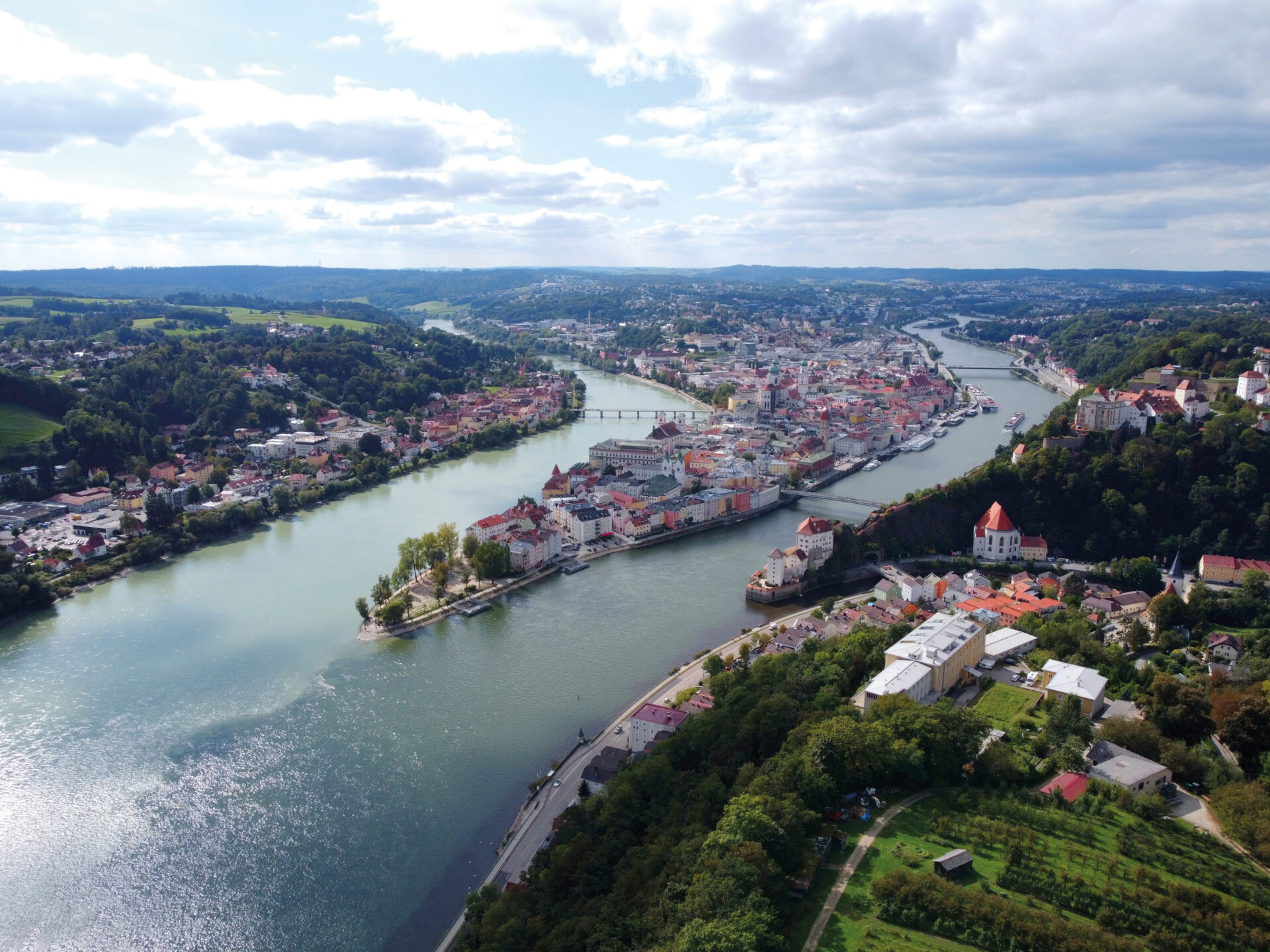
-
Hector
(Germany)The world’s largest plant for storing green hydrogen in liquid organic hydrogen carriers (LOHC) on an industrial scale is being built at CHEMPARK Dormagen, with construction planned in 2025. The state of North Rhine-Westphalia is supporting the project with funding of 9 million euros from the progres.nrw programme. The Krefeld-based subsidiary of Hydrogenious LOHC Technologies, LOHC Industrial Solutions NRW GmbH, will take charge of project management and plant operation. With its proprietary LOHC technology, the Erlangen-based parent company can contribute the key element and the corresponding scaled plant system. With the planned plant capacity, about 1,800 tonnes of hydrogen per year can be stored in LOHC.
Its investor Covestro Deutschland AG will provide the site area and, in the future, the green hydrogen. The scientific partner is the Jülich Research Centre with its Institute for Energy and Climate Research. Two million euros of the funding for accompanying scientific studies will go there. Together with the Dutch co-investor Royal Vopak, a possible expansion of the project and potential establishment of a green hydrogen supply chain between the plant in Dormagen and Rotterdam is also being planned. There, the green hydrogen would be released from the LOHC and used primarily in the mobility and industrial sectors
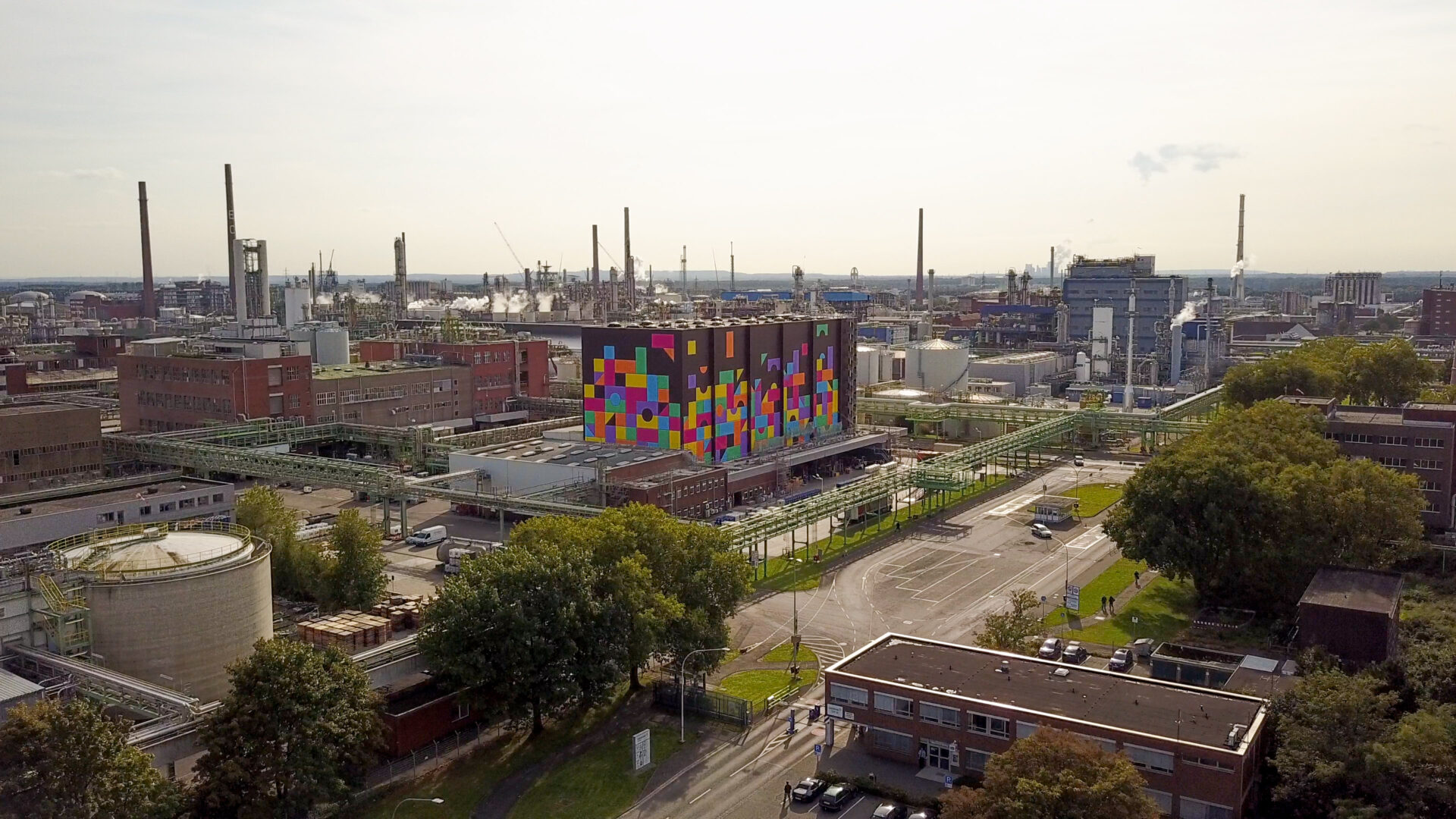
-
H2Sektor / HRS Erlangen
(Germany)We have established a complete LOHC supply chain with green hydrogen as a fuel for mobility in Germany. So far, hydrogen refuelling stations (HRS) have mostly been supplied with compressed and liquid hydrogen. Compressed hydrogen means limited capacities due to the low energy density and a high space requirement. If liquid hydrogen is stored for a longer period of time, so called boil-off losses occur. The new hydrogen refuelling station in Erlangen (operated by H2 MOBILITY Germany) shows the solution, especially for urban or incident sensitive environments: It also uses liquid organic hydrogen carriers (LOHC) for hydrogen supply including underground storage. This LOHC deployment is part of the broader H2Sektor pilot project, which involves the development and research of a complete LOHC-based chain from green hydrogen production to transport and use of the hydrogen for mobility.
The dehydrogenation resp. release system (ReleaseBox 10) used in the H2Sektor test project at the Erlangen hydrogen refueling station is a 30-foot container. This small plant performance class releases around one kilogram of hydrogen every hour from around 20 liters of LOHC material. Following the release, a compression to 45 bar takes place. From the ReleaseBox, the hydrogen reaches an intermediate store, which ensures that it is compressed to the 350 bar (buses, trucks) and 700 bar (cars, light utility vehicles) required for refueling. Since 2022, Hydrogenious has been pursuing the development of significantly larger release systems with a capacity of at least 1.5 tons of hydrogen/day, which are particularly suitable for refueling stations supplying hydrogen truck and bus fleets.
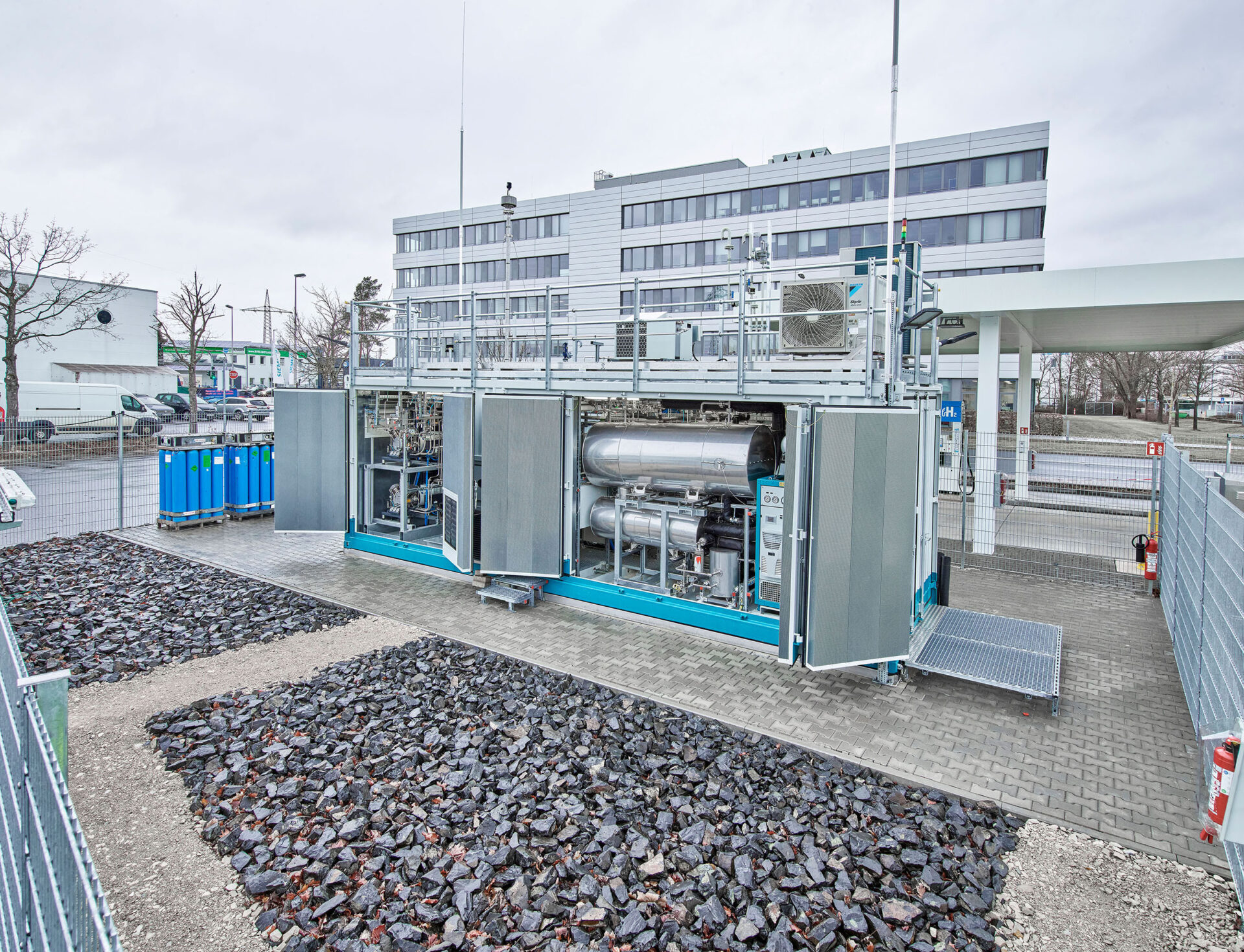
We contribute to create viable hydrogen hubs.
-
H2A -RP
(Netherlands)Within the joint cross-border lighthouse project H2A-RP, we are installing one of the first industrial large-scale LOHC ReleasePLANTS (RP) in Europe. Together with the world’s largest gasoline port, the Port of Amsterdam, and the leading liquid energy and chemical storage company Evos, we have formed a strong consortium that brings together all the expertise needed to build Europe’s new resilient hub for green hydrogen imports in Amsterdam.
Backed by the well-known H2A (Hydrogen to Amsterdam) initiative, which aims to import one million tonnes of green hydrogen via the Port of Amsterdam, H2A-RP was launched in 2022 with the signing of a collective MoU between the three project partners. We are currently aiming to import 36,000 tonnes of green hydrogen per year using our proprietary LOHC technology. Located directly in the Port of Amsterdam, the plant provides access to over 12 terajoules of clean energy – every single day. As a strong and indispensable pillar of Europe’s new energy infrastructure, we will supply various off-takers in the North Sea Canal area and its hinterland as well as support the European Hydrogen backbone. Thanks to the flexibility of LOHC technology and the use of existing infrastructure, H2A-RP can be easily connected to hydrogen partner projects around the world, providing multiple sources of green hydrogen.
-
TransHyDE Helgoland
(Germany)Within the TransHyDE project we research and develop a comprehensive LOHC-based supply chain for green hydrogen with Heligoland (North Sea) as storage location (hydrogenation) and the port of Hamburg as location for hydrogen release (dehydrogenation). The goal is to establish a reproducible and scalable blueprint for global sites with similarly challenging conditions.
The Helgoland location is the ideal research environment for the project, as it combines many challenging environmental conditions that will be relevant again and again at potential locations around the world beyond an established industrial area/chemical site. According to the motto: “If it works on Helgoland, then it works everywhere”, the requirements for the implementation are studied in detail and checked for the potential for implementation. Heligoland-specific location challenges are:
- Dynamic wind profile and hydrogen production profile
- Weather conditions on the North Sea (keyword technology, material corrosion and resilience)
- Sea water (material corrosion and resilience)
- Tourism (inconspicuous implementation, cargo handling)
- Little space (size of hydrogenation plant, LOHC storage, producible quantities, narrow development, competing uses)
- Approvability in the context of the points already mentioned
- LOHC transport and supply chain by ship
